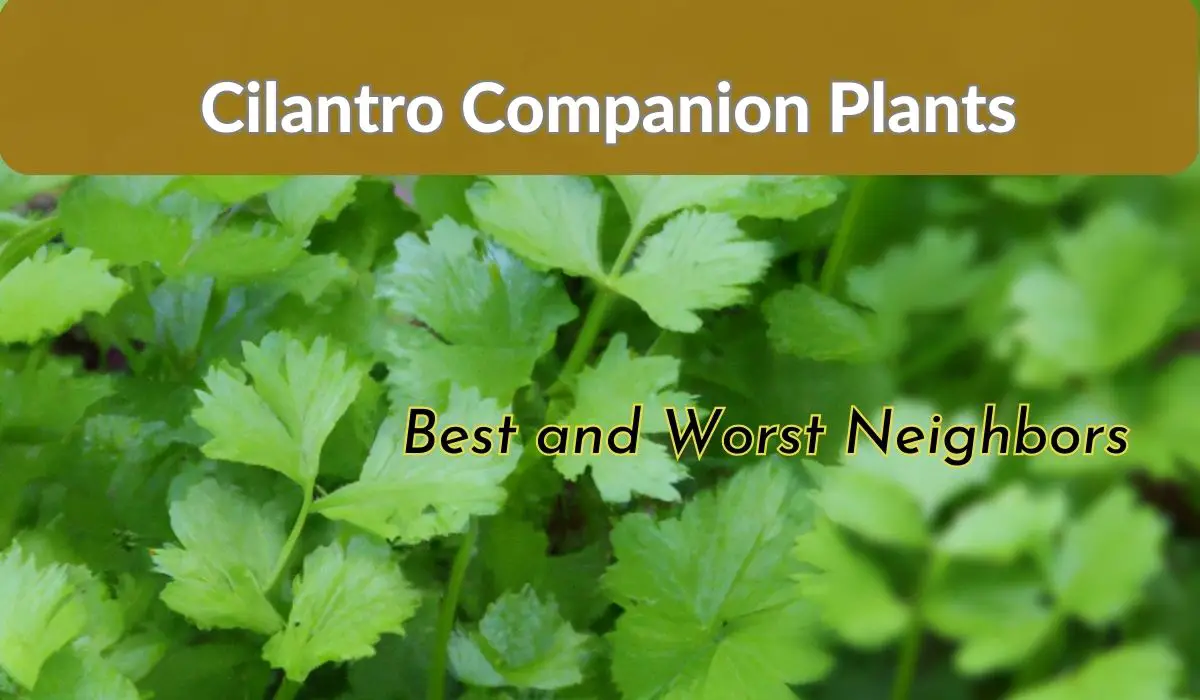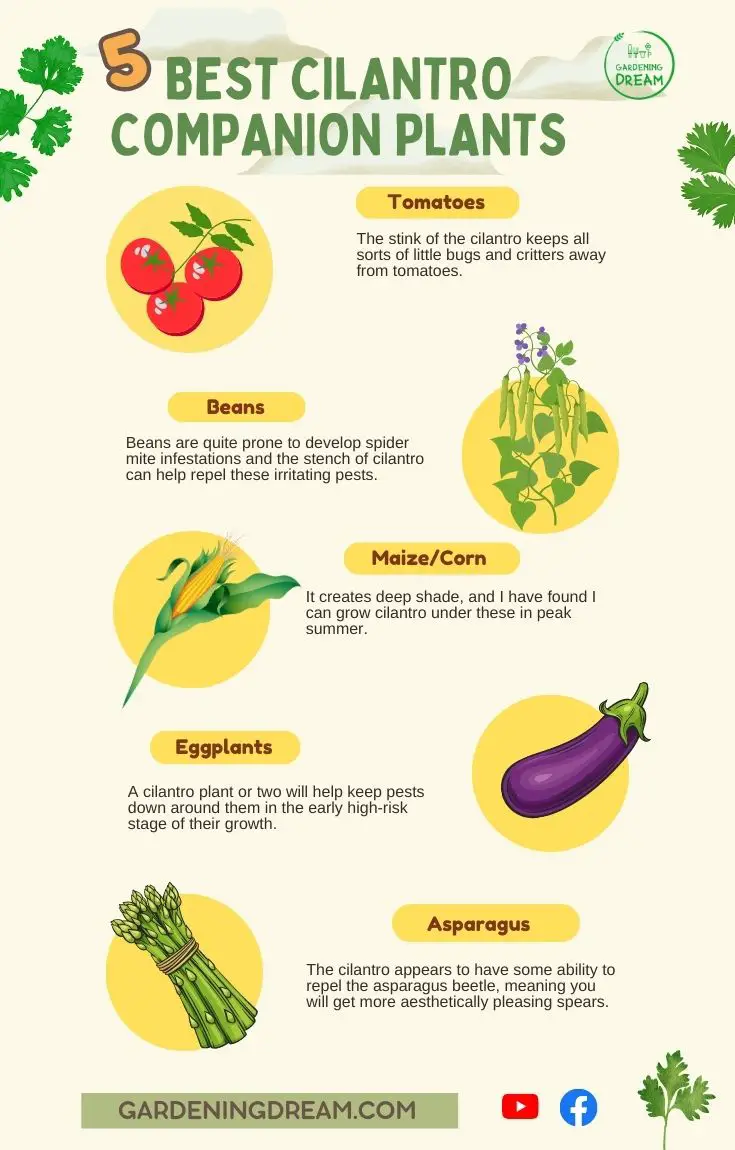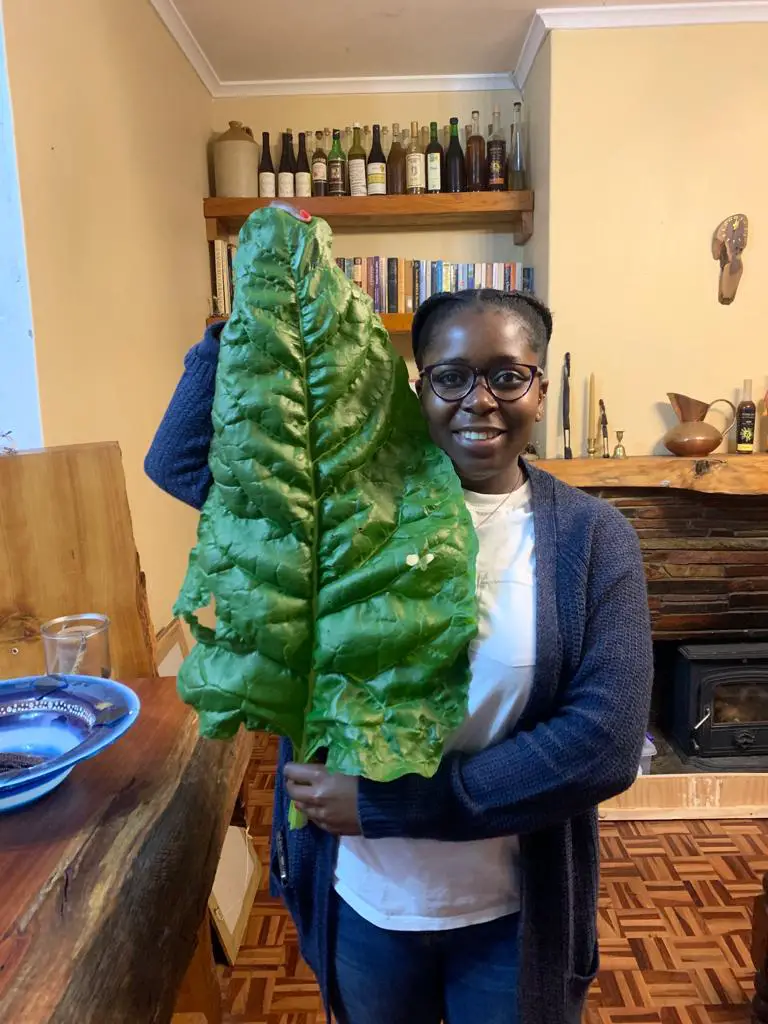Last Updated on April 19, 2023 by Tony Manhart
Let us have a look at a few cilantro companion plants. I enjoy companion planting and have found that in many cases, this really allows you to coax extra productivity out of your garden.
Quick Summary: What is a good companion plant for cilantro?
Cilantro companion plants are varied and include many disease-prone plants such as tomatoes, eggplants, potatoes, and asparagus that benefit from the stench of the cilantro keeping bugs that transmit diseases away. Peppers, basil, mint, yarrow, and tansy also benefit from being near cilantro.
What is Companion Planting?
Companion planting refers to the practice of planting plants in such a way that the outcome of planting two plants close to each other will be better for both or at least one of the plants, than if they were planted far apart. It is a form of symbiosis.
There are three broad forms of companion planting.
Win/Lose: Sometimes if you plant two plants together, one plant really benefits, and the other plant will act as a pest magnet, and keep pests away from your chosen plant. In this case, the chosen plant thrives and the companion plant gets hurt by the pests. So one wins, and one loses.
Win/Nothing: Sometimes planting two plants together, one plant has little benefit or loss, but the other plant benefits a lot.
Win/Win: Both plants gain a benefit and do much better.
In my experience of planting Cilantro with other plants, you want to find plants that need the stink of cilantro to chase bugs away, and the cilantro needs to get shade from the plant you choose. Cilantro companion planting is predominantly win-win.
Cilantro Companion Plants Vegetables
There is a huge amount of conflicting wisdom on the internet, so I am not even going to bother reviewing this and will rather just share my personal experience, and that of my close gardening circle of friends. Many of these are world-class horticulturists who consult for very big agricultural companies hence their wisdom is quite sound.
Tomatoes
I find that cilantro and tomatoes make an excellent combination in my garden. The stink of the cilantro keeps all sorts of little bugs and critters away from tomatoes. Tomatoes are very virus and fungus-prone, and insects, snails, and mites are major vectors of these pathogens. Cilantro stinks and keeps these pests far away.
If you plant cilantro about 8 inches away from the base of the tomato plants, it will thrive and not compete with the tomato for light. I discovered this companion planting method entirely by accident as I have cilantro that just comes up all over my garden and noticed that tomatoes near cilantro seemed to do better.
Beans
Beans are quite prone to develop spider mite infestations and the stench of cilantro can help repel these irritating pests. Cilantro grown around beans does very well. I accidentally pulled a plant up when I was harvesting seeds and you will find the cilantro root, which is quite a deep carrot-like tap root, twines around the bean root keeping very close to the nitrogen-fixing nodes in the bean root. I suspect the cilantro mooches nitrogen from these nodes – the nodes are infected with nitrogen-fixing bacteria. Read How Long Do Beans Take to Grow?
Maize/Corn
I plant three to four corn crops a year, using different varieties for different seasons. In summer I plant the bloody butcher cultivar as my peak summer heat crop. This is a tall corn variety that can grow to about 7 feet tall and yields three cobs per plant. It creates deep shade, and I have found I can grow cilantro under these in peak summer.
In late summer as it cools down, you will struggle to grow cilantro in direct sunlight, but you can still grow it under a smaller corn plant such as a golden bantam cultivar. This is a delightful old heirloom variety that produces great cobs.
Potatoes
Potatoes are prone to all sorts of viruses and fungi much like tomatoes. Colorado potato beetles are a particular pest, and these little ladybug look-alikes can strip the leaves and transmit viruses and fungi from one potato to the next.
It is an observation, and I am not sure how accurate this observation is, but, I have noticed that where cilantro and potatoes come up together, I have noticed less Colorado beetle damage. I have also noticed less spider mite damage on potatoes that grow near cilantro. Find out if a Potato is a Root and more Facts About Potatoes.
Fava Beans
Fava beans, like cilantro, are a cool-weather crop. Once or twice I have had these two grow together by mistake. My Fava bean bed, which is in a frost-prone patch of the garden has a “wild cilantro” problem in winter. The cilantro sometimes comes up here like a lawn. I have found that the fava beans that are near the cilantro appear to have fewer problems with chocolate spot rust on their leaves.
In the early stage of fava bean growth, you will often find a lot of aphids on the growth tips of the beans – this problem also seems to be averted by the presence of cilantro. Many species of aphids and thrips just do not like being near cilantro. Nature being what it is, there are also some species of aphids that I have seen that grow on cilantro. These also give my Artemesia plants a problem so they are obviously a special type of aphid with the ability to eat toxic terpenes. Luckily these seem to appear for a few weeks and then disappear naturally.
Peas
Peas are pest and disease magnets. Aphids, whitefly, thrips, caterpillars, hoppers, slugs snails, and even chickens cannot resist eating these delicious protein-rich leaves. With the heavy pest issues come all the fungus issues that damaged leaves are prone to.
Planting cilantro around your peas seems to help a bit. As the cilantro flowers grow into tall bushes, the peas grow inside these cilantro bushes, and the smell of the cilantro stops the birds from eating the pods. For dry peas, I have had some luck growing the two together outdoors, and at the end of the season, I pull the cilantro/pea bushes out, dry them indoors, and harvest the cilantro and pea pods in one go. If you choose to grow peas as a companion plant for cilantro, read How Long Does It Take For Peas To Grow.
Asparagus
Asparagus is a funny plant, it takes years to get established and it just sort of occupies a bit of space and then vanishes. I have quite a lot of it growing all over my garden, and in some cases, it has grown with cilantro. The Asparagus can get away from the cilantro and avoid being swamped by it.
The cilantro appears to have some ability to repel the asparagus beetle, meaning you will get more aesthetically pleasing spears. Asparagus beetles are a real nuisance and their ability to just mess up your crop by gnawing chunks out of the spears is quite infuriating.
Eggplants
Eggplant is just a disaster waiting to happen. These plants are so disease prone. Fungi, viruses, and spider mites just love eggplants. The result is that your plants tend to just wither up for no reason, die, go yellow, and just generally underperform unless you poison them with powerful dangerous chemicals.
I have had some luck when in early spring I put the eggplants in the ground and a few cilantro plants are near them. Eggplants need heat, and hence you plant them in the warmest parts of your garden. A cilantro plant or two will help keep pests down around them in the early high-risk stage of their growth. If anybody tells you they can get cilantro to grow in summer near an eggplant that is producing fruits I suspect they are telling fibs.
Eggplants need significant heat units in summer to fruit properly, and a healthy fruiting eggplant will be in a heat zone that cilantro cannot grow in. If you are going to grow eggplant as a cilantro companion plant, I recommend that you read this article How Long Eggplant Plants Live.
Peppers and chilis
Much like for eggplants, we plant peppers and chilis in the warmest parts of our gardens as they need heat in summer to produce the best crop. This means you can plant a few cilantro around your peppers in the colder months as they grow, and this will help keep pests away from the peppers. As summer kicks in, and the heat goes up, you will however struggle to keep a cilantro plant alive anywhere where a pepper can fruit.
What Grows Well with Cilantro – Herbs: Basil, Mint, Yarrow, and Tansy
These herbs will grow well with cilantro. I have not had much luck with tansy growing at all. It just does not like my garden. But basil mint and yarrow have all grown well in my garden. Mint is actually a bit of a weed, and basil, the perennial form, is something I plant everywhere to keep my solitary pollinators well and healthy. It often accidentally ends up with a cilantro plant entwined in it, and when both flower at the same time you end up with a riot of pollinators in the combination bush.
What Not to Plant Near Cilantro
There are not many plants that do not combine well with cilantro. Over the years I have noticed a few bad combinations, and list them here:
Swiss chard
I have noticed that these two just do not mix well. I grow very good Swiss Chard. I have noticed that Swiss Chard grown close to Cilantro plants tends to be a bit stunted and mangy. The plants lack the raw enthusiasm that good Swiss Chard plants typically display when it gets cooler.
This is an example of one of our Swiss Chard leaves, shown by Dr. Nyiko Mabasa who also writes for this website. If this plant were adjacent to a Cilantro plant the leaf would be half that size and would not taste as good.
Parsnips
I love parsnips and allow these to go to seed and grow as “wild weeds” in my garden. Much like cilantro. This has resulted in the two coming up together from time to time and I noticed neither appeared to be happy. They are related plants, so maybe they just don’t like each other because they compete in a similar ecological niche.
Celery
Celery is an occasional weed crop in my garden. I allow the plants to go to seed, and in certain years conditions will be perfect and it comes up as a major weed. In such years, it becomes a staple in soups.
Celery is just good for you, and, it has a sort of secret effect on the vascular system that is rather useful for men and women under certain circumstances. Celery and cilantro appear to fight. I have found when they come up together that neither seems as happy as plants that are further apart. Both are low-light winter/autumn/spring crops and I think they just crowd each other out and confer little benefit to each other.
Fennel/dill/anise
These plants basically don’t really grow well with anything. They produce substances that actually inhibit the growth of other plants. Given that we may often be tempted to crowd herb plants together, just remember that these three closely related plants just need their space. This includes space from cilantro.
In Conclusion:
Cilantro companion plants are varied and include many disease-prone plants such as tomatoes, eggplants, potatoes, and asparagus that benefit from the stench of the cilantro keeping bugs that transmit diseases away. Peppers, basil, mint, yarrow, and tansy also benefit from being near cilantro. Companion planting with cilantro is relatively easy as this plant becomes a weed in the garden. For me, I try to keep it away from Swiss Chard, and Fennel. Pretty much every other plant benefits from being near it.
Dr. Garth A. Cambray is a Canadian/South African entrepreneur and beekeeper with 28 years of experience in apiculture and specializes in adding value to honey. His Ph.D. research developed a new advanced continuous fermentation method for making mead that has resulted in a number of companies globally being able to access markets for mead. His company, Makana Meadery, exports honey mead to the USA where it is available to discerning connoisseurs. He has also developed technologies to commercially manufacture organic honey vinegar in Zambia for export globally. He holds a few patents globally in the ethanol industry and believes in technology and knowledge transfer for human development and environmental sustainability. One of his proudest achievements is the fact that the wind farm he started at one of his old apiary sites has essentially made his hometown carbon neutral.





